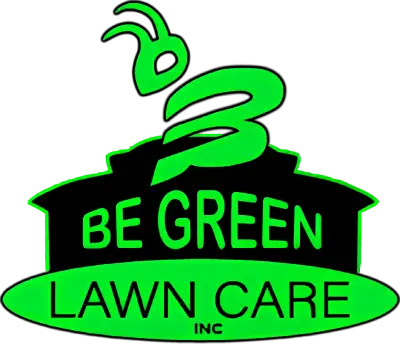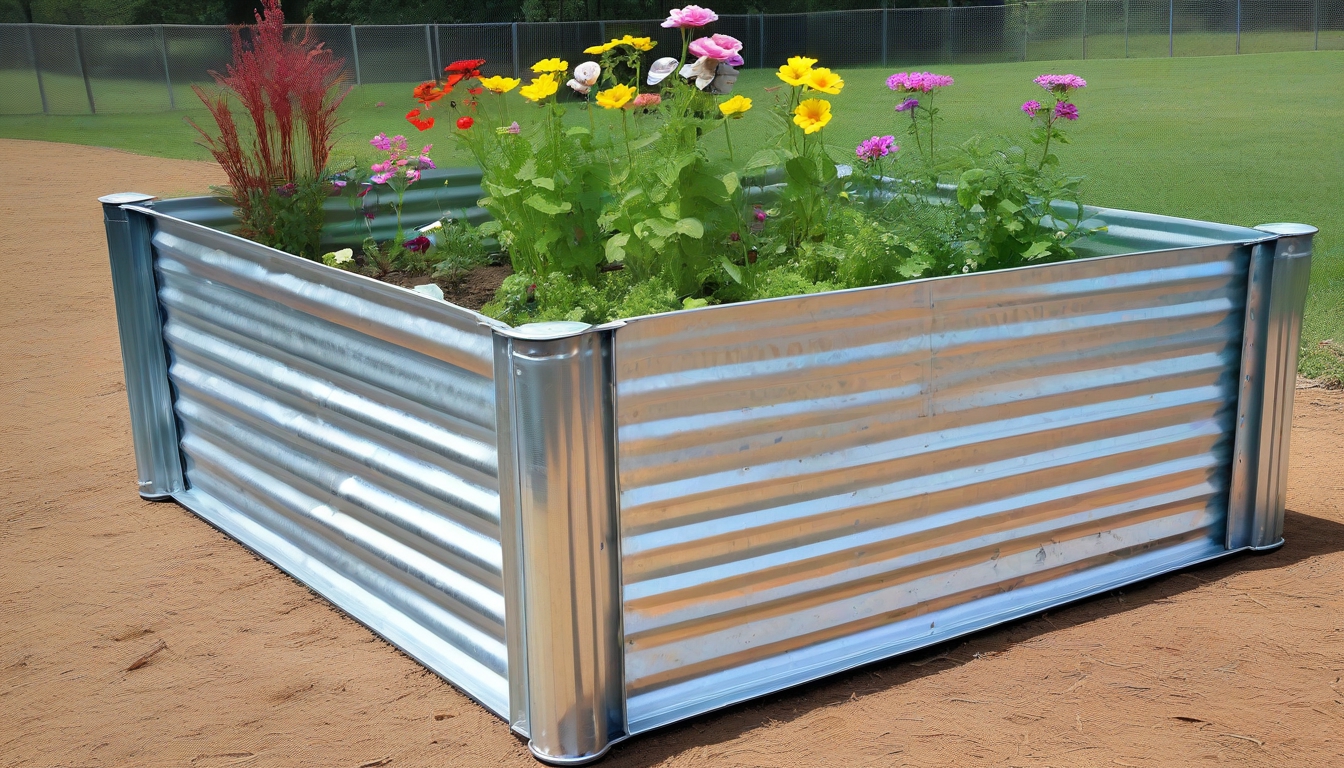Gardeners in Calgary often seek durable and weather-resistant materials for their raised garden beds. One popular choice is galvanized steel, known for its strength and longevity. People have safety concerns combined with doubts regarding dirt quality and crop wellness when working with this composition. In this article, we’ll explore whether galvanized steel garden beds are safe for Calgary’s climate and your homegrown produce.

What is Galvanized Steel?
Galvanized steel is coated with a layer of zinc to prevent rust and corrosion. The material exhibits suitable properties for outdoor applications making it an excellent choice for constructing garden beds. The zinc coating extends the lifespan of the metal, protecting it from the elements and ensuring durability in Calgary’s fluctuating weather conditions, often lasting 20 years or more. 1
Are Galvanized Steel Garden Beds Safe for Growing Food?
Zinc-coated steel material remains a key concern for backyard gardeners because they wonder about its potential to dissolve into soil thereby contaminating plants. Here’s what you need to know:
- Zinc is a natural element found in soil and is essential for plant growth. In small amounts, it does not pose a risk to plants or human health.
- Minimal leaching occurs under normal gardening conditions. Studies show that zinc leaching from galvanized steel is minimal, especially when the pH of the soil remains neutral to slightly acidic.2
- Protective barriers can be added if you’re still concerned. A simple way to reduce contact between soil and metal is by using a liner, such as landscape fabric or a plastic barrier.
How Galvanized Steel Performs in Calgary’s Climate
The weather conditions in Calgary become quite difficult because they feature extremely cold winters and very warm summers. Galvanized steel garden beds demonstrate strong durability in harsh conditions because they resist rust. Galvanized steel requires little maintenance because it withstands deterioration for many decades unlike untreated metal which corrodes quickly.
Advantages of Galvanized Steel Garden Beds:
- Durability – They withstand Calgary’s harsh winters without breaking down.
- Pest Resistance – Unlike wooden beds, they do not attract pests like termites.
- Sleek Aesthetic – They offer a modern look that complements urban and suburban gardens.
- Efficient Drainage – Their design allows for proper water flow, preventing root rot.
Potential Concerns and How to Address Them
Galvanized steel presents no major safety concerns yet gardeners express doubts about how well it retains heat as well as its potential effects on soil acidity.
Heat Retention
Metal-based materials heat up faster than wooden or plastic materials do thus they speed up soil temperature increase under sunny weather. The swift soil drying process could need additional watering in order to prevent soil dehydration due to the short growing season of Calgary.
Solution:
- Position the beds where they receive partial shade during the hottest part of the day.
- Use mulch to retain soil moisture.
Soil pH and Zinc Exposure
The low pH conditions found in highly acidic soils (below 5.5) cause rapid zinc leaching 3that stays mostly prevented in Calgary soil because it maintains neutral to slightly alkaline levels.
Solution:
- Test your soil pH periodically.
- Add organic matter like compost to maintain a balanced pH.
Final Verdict: Are Galvanized Steel Beds Safe for Calgary?
Yes! The garden beds made from galvanized steel present both safety and durability advantages for gardening in Calgary. The material displays long-term durability while sustaining itself against environmental hazards and maintaining complete safety for both soil and plants. Simple soil pH maintenance and keeping desired liners when needed will enable you to safely enjoy the sturdy benefits of these garden beds.
Are You Considering Galvanized Steel Garden Beds?
The installation of raised galvanized steel beds in Calgary gardens furnishes you with enduring attractive structures. Proper maintenance allows these structures to increase your gardening satisfaction for multiple years.
Frequently Asked Questions
What Are Garden Beds?
Garden beds are designated areas for growing plants, typically bordered by materials like wood, stone, or metal to contain soil and improve growing conditions. Planting systems aloft the ground provide enhanced control over soil conditions as well as drainage capabilities better than in-ground planting. Garden beds allow users to create customized beds that support vegetable plants and flowering plants and herb cultivation.
What Are Raised Garden Beds?
Raised garden beds are elevated planting areas built above ground level. They provide better drainage, improved soil quality, and easier access for gardeners. The elevated structure of raised beds both minimizes soil compression and extends the cultivation period and eases physical workload on gardeners. The elevated structure stops slugs together with burrowing pests from entering the garden plot.
What to Fill Garden Beds With?
Garden beds should be filled with a combination of topsoil, compost, and organic matter such as peat moss or aged manure to promote healthy plant growth. A perfect mix between ingredients in the soil provides necessary drainage while allowing air circulation and delivering nutrients to plant roots. Embellishing soil quality through layered approaches is a technique used by several gardeners which includes the lasagna method.
How to Fill Garden Beds?
Start with a base layer of coarse material like sticks, straw, or wood chips for drainage, followed by layers of compost, soil, and organic amendments to create a nutrient-rich growing environment. Using high-quality compost ensures that the soil remains fertile and retains moisture while preventing weeds from taking over. Some gardeners also incorporate slow-release fertilizers or natural amendments like worm castings for additional nutrients.
How Deep Should Garden Beds Be?
The depth of a garden bed depends on the plants being grown. For most vegetables, a depth of 12-18 inches is sufficient, while root vegetables like carrots and potatoes may require deeper beds of at least 24 inches. Shallower beds (6-8 inches) can be used for herbs or leafy greens, but deeper soil allows for better root development and improved moisture retention.
How Tall Should Garden Beds Be?
Raised garden beds typically range from 12 to 36 inches tall. Taller beds reduce the need for bending and are ideal for accessibility. Distinctions in bed height around 24 inches remain the best choice for mobile-limited individuals who need to reduce continual workings with the garden. The increased height of beds delivers better protection from small animals while simultaneously improving drainage conditions in locations where rainfalls are heavy.
Can You Paint Garden Beds?
Yes, garden beds can be painted, but it’s important to use non-toxic, outdoor-safe paint or sealant to avoid chemicals leaching into the soil. Wooden bed frames get extended life when applied with food-safe sealants which also improve their visual appeal. The paint coating for metal garden beds needs to be rust proof while maintaining normal drainage functions and thermal properties.
Can Garden Soil Be Used in Garden Beds?
Garden soil alone is often too dense for raised beds. It’s best to mix it with compost and aerating materials like perlite, sand, or coconut coir to improve drainage and nutrient availability. Using a mix designed specifically for raised beds helps prevent soil compaction, promotes root growth, and maintains the right balance of moisture and air for healthy plants.
Citations
- The Pros And Cons Of Using Galvanized Steel In Your Garden – AccessibleGardens. (2022, September 18). Retrieved February 22, 2025, from Accessiblegardens.org website: https://accessiblegardens.org/
↩︎ - Team, E. (2024, January 13). Does Galvanized Steel Leach into Soil? – The Environmental Literacy Council. Retrieved February 22, 2025, from The Environmental Literacy Council website: https://enviroliteracy.org
↩︎ - How Long Can Raised Beds Really Be Expected to Last? • Gardenary. (2024). Retrieved February 22, 2025, from Gardenary.com website: https://www.gardenary.com/ ↩︎



